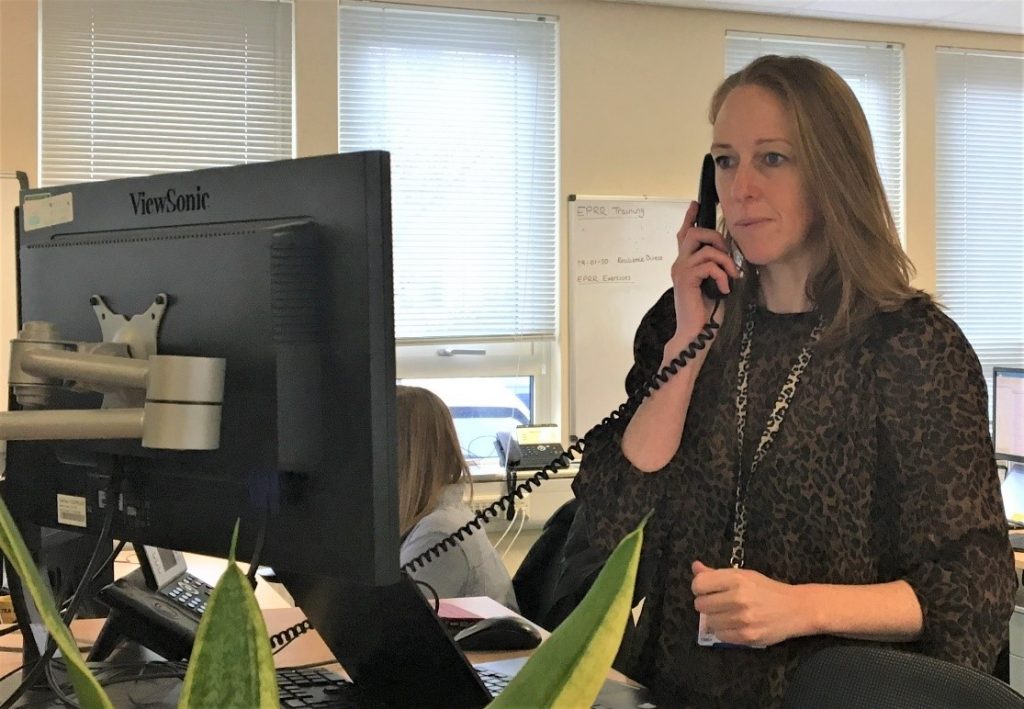
As we move to the next stage of our fight against coronavirus, the newly launched NHS Test and Trace service will help identify, contain and control coronavirus, reduce the spread of the virus and save lives.
Thousands of new contact tracers have been enlisted to communicate with people who test positive for coronavirus. It’s vital that anyone who experiences coronavirus symptoms orders a coronavirus test immediately at nhs.uk/coronavirus or calls 119 and, if they do test positive, they respond as soon as possible to texts/emails from NHS Test and Trace. This will make sure we can get appropriate advice to those who need it, ultimately protecting our friends and family from infection.
This important work will be overseen by PHE health protection teams, linking with local government, with these established local experts continuing to manage complex cases and outbreaks. Read more about what contact tracing is in our previous blog.
One of those experts is Trish Mannes, Deputy Director for Health Protection at PHE and a senior epidemiologist with more than 20 years’ experience in preventing and managing infectious disease outbreaks.
Here she gives a personal account of the role of contact tracing. For Trish, one of the most important skills of a contact tracer is having detective like instincts.
“You must be thorough, inquisitive, ask all the right questions and make sure you are one step ahead.
“Good contact tracers are also personable and empathetic and have the ability to tease information out of people.
“A typical day for a contact tracer is busy and varied. You might be speaking to someone who has been on a coach trip around the UK in the morning and a care home manager in the afternoon.
“Your aim is to help people who have an infection remember who they have been in close contact with, so you can protect the greatest number of people from becoming infected.”
“It is meticulous and time-consuming work but incredibly rewarding.
“Contact tracing is at the heart of preventing the onward spread of infection from someone who has a particular infectious disease.
“We provide interventions and advice to allow people to detect their infection early, or to isolate so that they're not at risk to other people.”
Trish and her team were called into action to slow the spread of COVID-19 when the first cluster of cases was identified in Brighton in February. She explains the rapid process of how she and her team dealt with these early cases.
“We received a call from the laboratory confirming the result. At that point, all the other processes were triggered. That notification, particularly for the first few cases, came at quite unsociable hours.
"We phoned the patient and interviewed them. We had to be inquisitive, and to go through a detailed timescale of what they did every day, each bit of the day, who they worked with, lived with, who they socialised with outside work.
“We asked them to describe what their symptoms were and what point at which they became unwell, so we could try to pinpoint the moment they may have become infectious.
“With COVID-19 you need to know the close recent contacts of anyone who has coronavirus, so this could include someone in a workplace, a pub, anywhere that you spend a considerable length of time in close proximity to others.
“You can imagine, before social distancing measures came in we all had busy lives, including busy social lives, so in any one given day, people may well have exercised before work, went to work for the whole day, were in close proximity of lots of different colleagues at work, lunch, after work social events.
“As we’ve developed our understanding of the disease we’ve refined our approach, in terms of what we knew about a person's contact and how significant it was in terms of infection and we're getting more information all the time.
“It was very intense for those doing the interviews and the individuals who were being interviewed, who obviously felt concerned about who they may have transmitted this to, particularly very early on. There was a lot of reflections of, ‘I may have bought this disease into the UK’, lots of very worried people, and they were really keen to help prevent any spread of the disease.”
According to Trish, having the ability to adapt throughout the phases of the pandemic has been crucial.
“We have never stopped contact tracing, we just focussed on supporting vulnerable settings, for instance minimising the spread of infection in hospitals and care homes.
“The types of contacts that people have in a care home is different to someone walking around in the general community, but the principles are the same.
“So we do contact tracing all the time, it's part of our day job, and it's been our day job before COVID-19. At local level it involves a highly trained, specialist workforce of either consultant medical practitioners or nurses and Environmental Health Officers with specific training. We are experts in infection and the public health management of infectious diseases.”
Trish emphasises that she and her team are ready to deal with the demands and challenges that lie ahead, continuing to manage complex cases and outbreaks as well as overseeing the new 25,000 strong workforce which itself contains thousands of health professionals who will speak to people who have been confirmed as having COVID-19.
“As we head into the new phase, we have seen the recruitment of the army of contact tracers and that will allow us to do this at scale.
“As the NHS Test and Trace programme progresses, using new technology, like the app, will also be a great addition, but the principles of contact tracing will remain the same.
“This has been a challenging period, but we’re ready to provide our support as we enter the next phase of the pandemic.”
